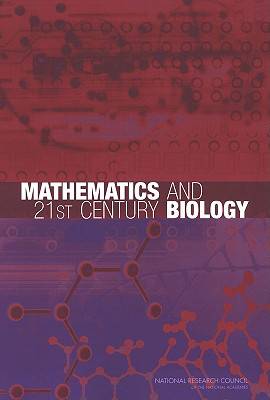
- Afhalen na 1 uur in een winkel met voorraad
- Gratis thuislevering in België vanaf € 30
- Ruim aanbod met 7 miljoen producten
- Afhalen na 1 uur in een winkel met voorraad
- Gratis thuislevering in België vanaf € 30
- Ruim aanbod met 7 miljoen producten
Zoeken
Mathematics and 21st Century Biology
National Research Council, Division on Engineering and Physical Sciences, Board on Mathematical Sciences and Their Applications, Committee on Mathematical Sciences Research for Doe's Computatio
Paperback | Engels
€ 55,95
+ 111 punten
Omschrijving
The exponentially increasing amounts of biological data along with comparable advances in computing power are making possible the construction of quantitative, predictive biological systems models. This development could revolutionize those biology-based fields of science. To assist this transformation, the U.S. Department of Energy asked the National Research Council to recommend mathematical research activities to enable more effective use of the large amounts of existing genomic information and the structural and functional genomic information being created. The resulting study is a broad, scientifically based view of the opportunities lying at the mathematical science and biology interface. The book provides a review of past successes, an examination of opportunities at the various levels of biological systems-- from molecules to ecosystems--an analysis of cross-cutting themes, and a set of recommendations to advance the mathematics-biology connection that are applicable to all agencies funding research in this area.
Specificaties
Betrokkenen
- Auteur(s):
- Uitgeverij:
Inhoud
- Aantal bladzijden:
- 162
- Taal:
- Engels
Eigenschappen
- Productcode (EAN):
- 9780309095846
- Verschijningsdatum:
- 16/07/2005
- Uitvoering:
- Paperback
- Formaat:
- Trade paperback (VS)
- Afmetingen:
- 155 mm x 230 mm
- Gewicht:
- 276 g

Alleen bij Standaard Boekhandel
+ 111 punten op je klantenkaart van Standaard Boekhandel
Beoordelingen
We publiceren alleen reviews die voldoen aan de voorwaarden voor reviews. Bekijk onze voorwaarden voor reviews.











